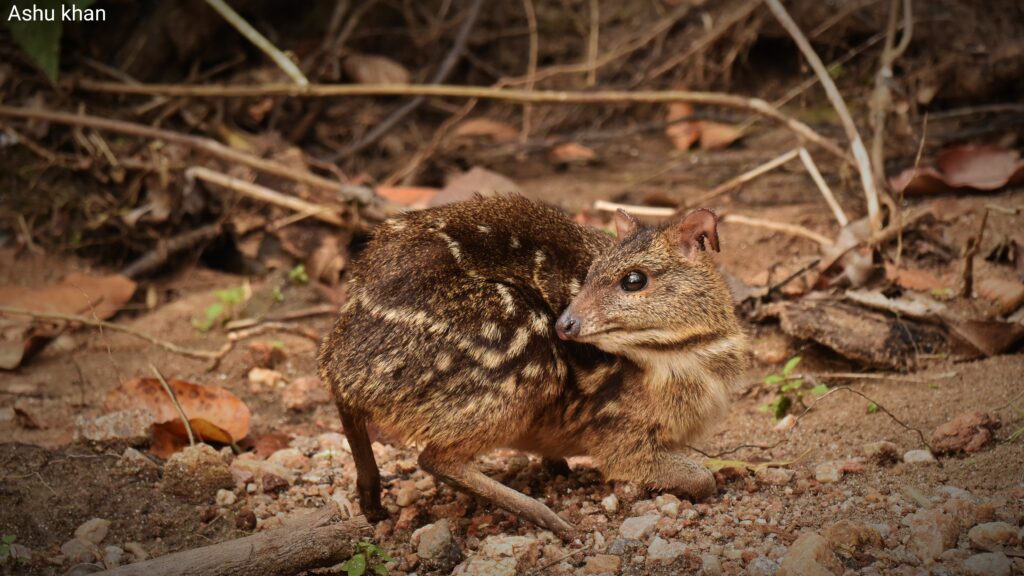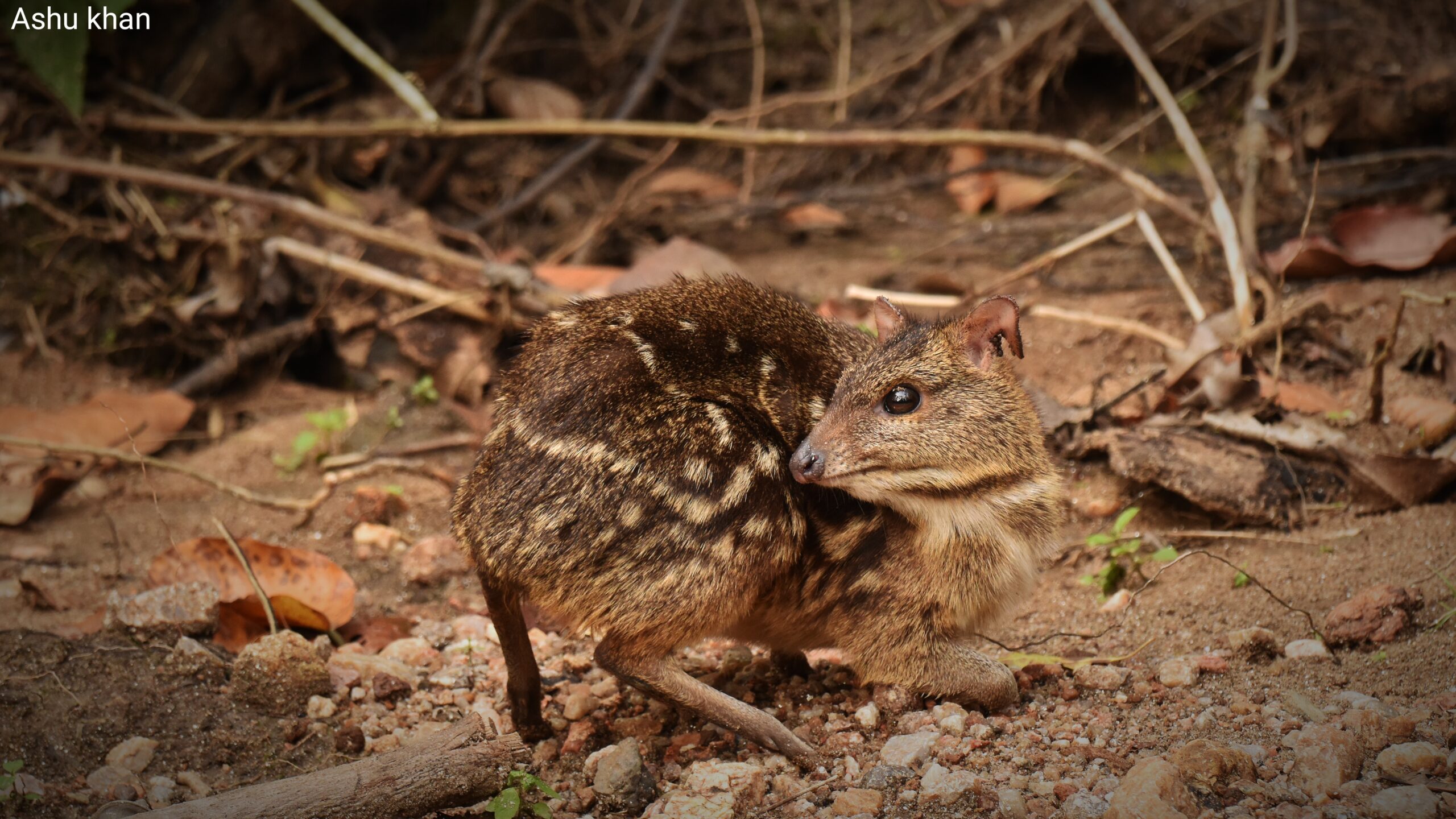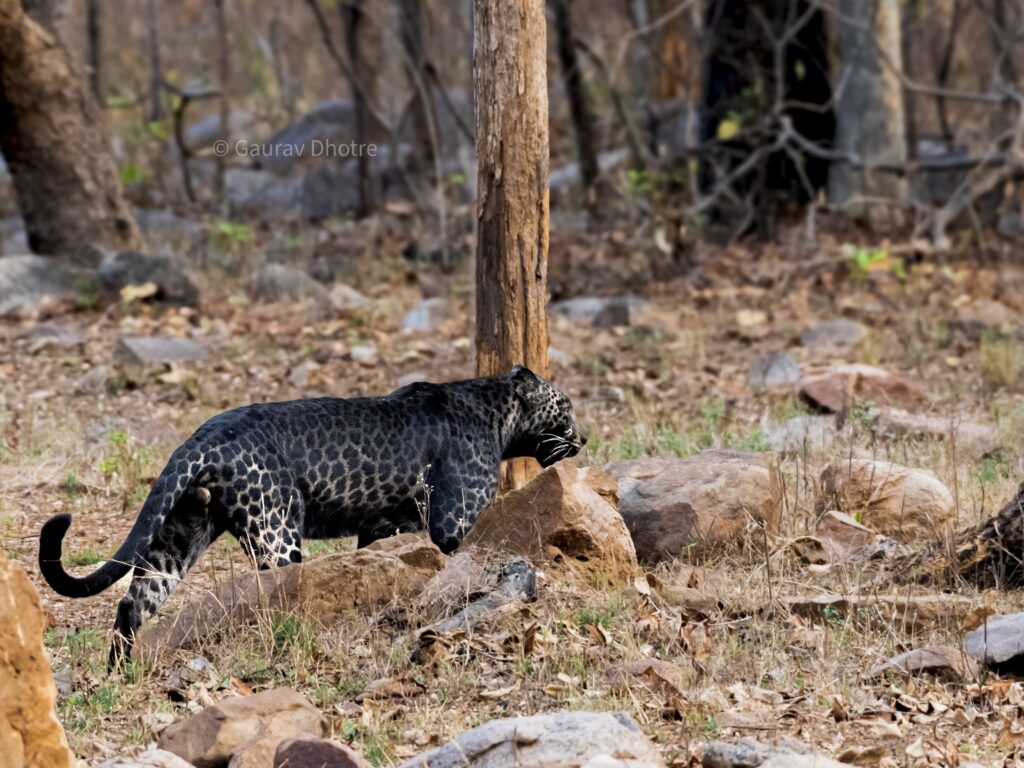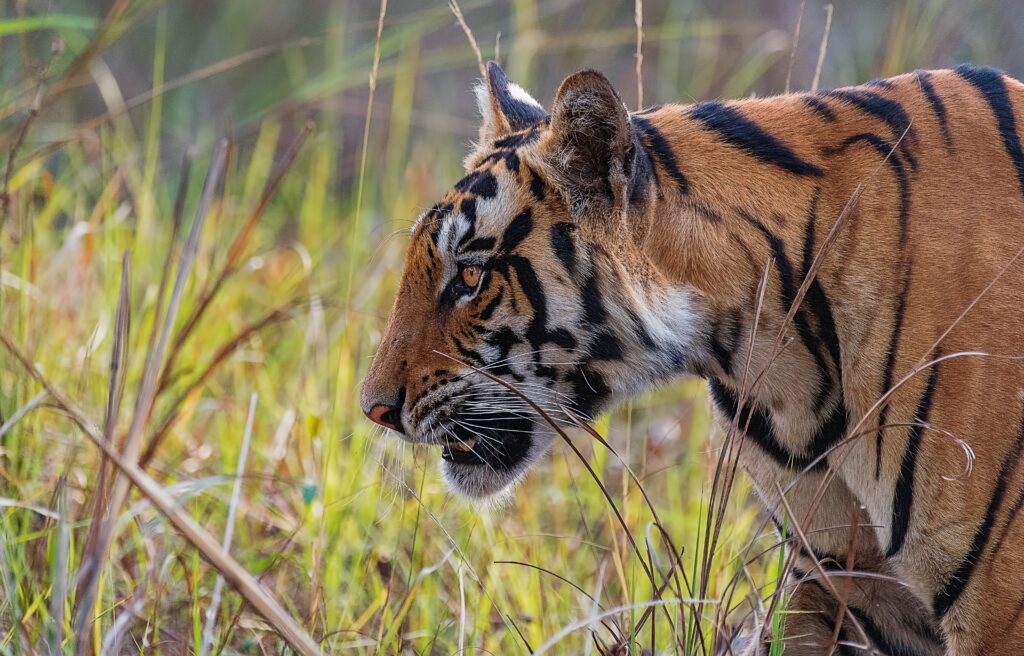The Indian Spotted Chevrotain, or Indian Mouse Deer (Moschiola indica), is a species of even-toed ungulate belonging to the family Tragulidae. This small, elusive creature is primarily found in the dense forests of India, Sri Lanka, and possibly Nepal.

Evolutionary Significance
An Ancient Lineage
Despite being labeled as deer, mouse deer are neither true mice nor true deer. They represent an evolutionary link between deer and pigs. As one of the oldest ruminant families, Tragulidae fossils date back at least 50 million years to the Eocene epoch.
Also read about: Red panda facts
Unique Physiology
Unlike other ruminants that possess a four-chambered stomach, the Indian Mouse Deer has a three-chambered stomach. This anatomical feature is another example of how they have adapted to their specific ecological niche.Distribution and Subspecies
Distribution : The Indian Spotted Chevrotain is just one of ten extant subspecies of mouse deer found across Southeast Asia, ranging from the Western Ghats and Eastern Ghats of India to regions in Sri Lanka, Thailand, Malaysia, and even parts of West Africa.
Among the ten species of mouse deer, the Javan chevrotain is the smallest, measuring about 45 cm in length and standing only 30 cm tall. This diversity in size and habitat preferences illustrates the evolutionary variations within the Tragulidae family.
Physical Characteristics and Appearance:
Size and Weight
The Indian Spotted Chevrotain is notably diminutive, typically measuring between 50 to 60 cm in head and body length and weighing around 3 to 4 kg. This small stature allows it to navigate the thick underbrush of its forest environment with ease.
Also read about: Antelopes of India
Distinctive Coloring
With a dull brown coat adorned with three to four white stripes along its flank, the chevrotain is well-camouflaged against the forest floor. This coloration serves as a crucial defense mechanism, making it difficult for predators to spot them a midst the dense foliage.
Unique adaptations ( dental)
Unlike any other deer, male mouse deer lack antlers. Instead, they possess prominent upper canines, which serve as tusk-like defenses against potential threats. These canines are more pronounced in males, providing them with a means to fend off predators and compete for mates, females also have them but not as prominent.
Also read about: Asiatic Elephants vs African Elephants
Behavioral Adaptations
Foraging Habits
The Indian Mouse Deer forages primarily on the forest floor, consuming a varied diet of fruits, roots, leaves, and herbs. Occasionally, they have been observed eating insects and small mammals and also crustaceans As a highly nocturnal species, the Indian Spotted Chevrotain is most active during the night. This behavior helps them avoid daytime predators and minimizes competition for food resources.

Social Structure and Communication
Solitary Nature: Typically solitary, Indian Mouse Deer only come together during mating seasons. Their communication is mostly limited to these periods, where males and females interact to establish breeding pairs.
Territorial Behavior: These are territorial aimals, with home ranges spanning from 13 to 24 hectares. Interestingly, neighboring males often ignore each other rather than engaging in aggressive confrontations. This non-competitive behavior is an interesting aspect of their social structure.
Ecological Role
Seed Dispersers: Indian Mouse Deer play a vital ecological role as they do seed dispersal within their habitats. By foraging on various fruits and plants, they contribute to the health and diversity of their ecosystems, aiding in the propagation of numerous plant species.
Predation and Survival Strategies: Although they face predation from carnivores like dholes, tigers, and leopards, mouse deer have developed remarkable survival strategies.when they feel agitated or threatened they rapidlybeat their hooves against the ground which creates a drumming or clicking sound as the stomping can reach up to 6 or 7 beats per second this ends up creating a distraction.
Unique Survival Behaviors
A particularly interesting behavior observed in some mouse deer species is their ability to quickly submerge themselves in water to evade predators. They can walk along the bottom of water- bodies and remain submerged for up to five to six minutes, showcasing their adaptability and resourcefulness, this behaviour was observed in 3 species out of 10 and much more research is required to study the elusive behavior.
Sheltering Techniques: Mouse deer often create dens in hollow tree trunks or dense foliage, which provide essential protection from predators. This behavior reflects their instinctual need for safety and security in a dangerous world.
Reproductive Behavior
High Reproductive Rate: Female Indian Mouse Deer exhibit a successful reproductive rate, often giving birth to multiple fawns within a single year.
Scent Marking for Mating : To attract females and mark their territories, male mouse deer possess a specialized maxillary gland that secretes scent. This adaptation is essential for communication during mating seasons, helping to ensure reproductive success.
Conclusion
The Indian Spotted Chevrotain is a remarkable example of nature’s ingenuity, showcasing unique adaptations that allow it to survive in the dense forests of India and beyond. As we continue to explore and understand these elusive creatures, it becomes increasingly vital to conserve their habitats and protect them from threats.
The intricate balance of their ecological roles and survival strategies highlights the importance of biodiversity and the need for ongoing conservation efforts. Protecting the Indian Mouse Deer ensures not only the survival of this captivating species but also the health of the ecosystems they inhabit, many of these species are still considered “ least concerned”
For those inspired by the mysteries of India’s forests and eager to witness this biodiversity in action, embarking on a Tiger Tour in India with Pugdundee Safaris offers a unique opportunity. Alongside iconic species like the tiger, our safaris often reveal rare glimpses of elusive creatures such as the Indian Spotted Chevrotain — making your journey into the wild both thrilling and deeply meaningful.
Content by Harpreet Singh, Shaheens and pictures contributed by Ashu, Naturalist at Kanha Earth Lodge. He had good sightings of Mouse Deer in Kanha National Park in 2019.




